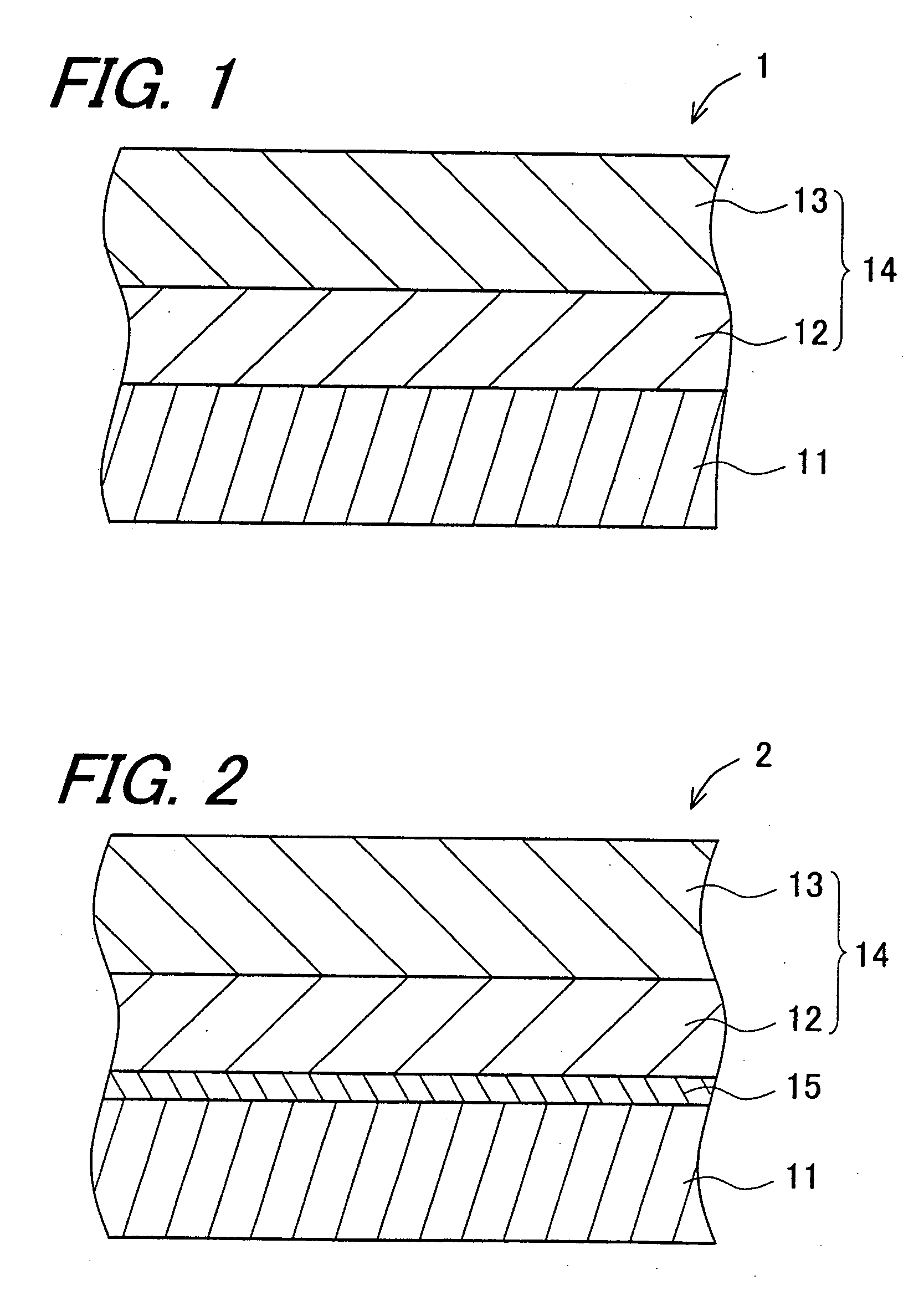Electrophotographic photoreceptor and image forming apparatus provided with the same
a photoreceptor and photoreceptor technology, applied in the direction of electrographic process, instruments, corona discharge, etc., can solve the problems of difficult to uniformly deposit the film of the photosensitive layer, low sensitivity and durability, etc., to achieve excellent durability, high sensitivity, and sufficient light responsiveness
- Summary
- Abstract
- Description
- Claims
- Application Information
AI Technical Summary
Benefits of technology
Problems solved by technology
Method used
Image
Examples
preparation example
[0242] Preparation examples for the enamine compound represented by the general formula (1) are to be described.
production example 1
Production of Compound No. 1
production example 1-1
Production of Enamine Intermediate
[0243] 23.3 g (1.0 equivalent) of N-(p-tolyl)-α-naphthylamine of the following structural formula (8), 20.6 g (1.05 equivalents) of diphenylacetaldehyde of the following structural formula (9), and 0.23 g (0.01 equivalents) of DL-10-camphorsulfonic acid were added to 100 ml of toluene and heated, and these were reacted for 6 hours while the side-product, water was removed out of the system through azeotropic distillation with toluene. After thus reacted, the reaction solution was concentrated to about 1 / 10, and gradually and dropwise added to 100 ml of hexane that was vigorously stirred, and this gave a crystal. The crystal was taken out through filtration, and washed with cold ethanol to obtain 36.2 g of a pale yellow powdery compound.
[0244] Thus obtained, the compound was analyzed through liquid chromatography-mass spectrometry (LC-MS), which gave a peak at 412.5 corresponding to the molecular ion [M+H]+ of an enamine intermediate (calculated m...
PUM
| Property | Measurement | Unit |
|---|---|---|
| Surface free energy | aaaaa | aaaaa |
| Surface free energy | aaaaa | aaaaa |
| Surface energy | aaaaa | aaaaa |
Abstract
Description
Claims
Application Information
 Login to View More
Login to View More - R&D
- Intellectual Property
- Life Sciences
- Materials
- Tech Scout
- Unparalleled Data Quality
- Higher Quality Content
- 60% Fewer Hallucinations
Browse by: Latest US Patents, China's latest patents, Technical Efficacy Thesaurus, Application Domain, Technology Topic, Popular Technical Reports.
© 2025 PatSnap. All rights reserved.Legal|Privacy policy|Modern Slavery Act Transparency Statement|Sitemap|About US| Contact US: help@patsnap.com



